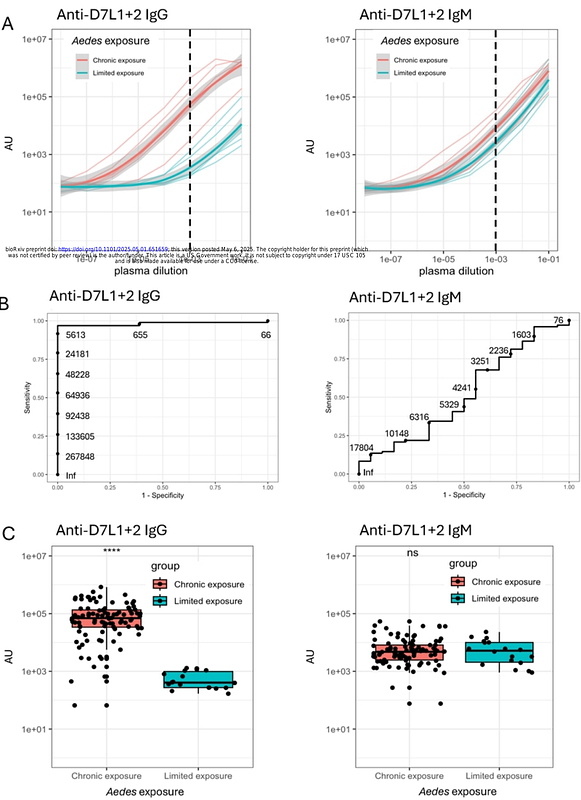Antibody response to Aedes aegypti D7L1+2 salivary proteins as marker of aggregate vector exposure and correlate of dengue virus susceptibility

Antibody response to Aedes aegypti D7L1+2 salivary proteins as marker of aggregate vector exposure and correlate of dengue virus susceptibility
Bahr, L.; Hamins-Puertolas, M.; Buddhari, D.; Petzlova, I.; Oliveira, F.; Thomas, S. J.; Thangamani, S.; Waickman, A.; Anderson, K.
AbstractAedes aegypti mosquitoes transmit several arboviruses of public health importance. Among these is dengue virus (DENV), a flavivirus whose global infection rates continue to rise each year. With limited options available for preventing or treating DENV infections, mosquito control remains the most widely implemented strategy to combat DENV transmission. Due to the global distribution of DENV, which infects an estimated 400 million people per year, vector suppression practices vary drastically by country and/or region and even small differences in microenvironment can significantly impact vector abundance. There remains a significant need to better understand vector exposure rates at an individual level to disentangle vector exposure and arboviral infection rates. To this end, we have optimized a serologic assay to assess the abundance of antibodies directed against the mosquito salivary proteins AeD7L1+2 as a surrogate metric of vector exposure. Utilizing this assay, we found that anti-D7L1+2 IgG levels were unable to identify low levels of Aedes exposure in individuals with limited prior Aedes exposure, indicating they are unreliable markers of an individuals recent exposure to low levels of these vectors. However, antibody levels against D7L1+2 were robust in plasma samples from individuals living in Aedes endemic regions. These antibody levels reflected seasonal changes in Aedes abundance and exposure, indicating their potential for use as an aggregate marker of vector exposure. Additionally, we found that there were slight negative associations with anti-D7L1+2 IgG levels and age in our cohort. Interestingly, we also found that lower titers of anti-AeD7L1+2 IgG correlated with higher infection burden in households. This finding has implications for the potential interaction between AeD7 proteins and DENV during infection events that will require further study.